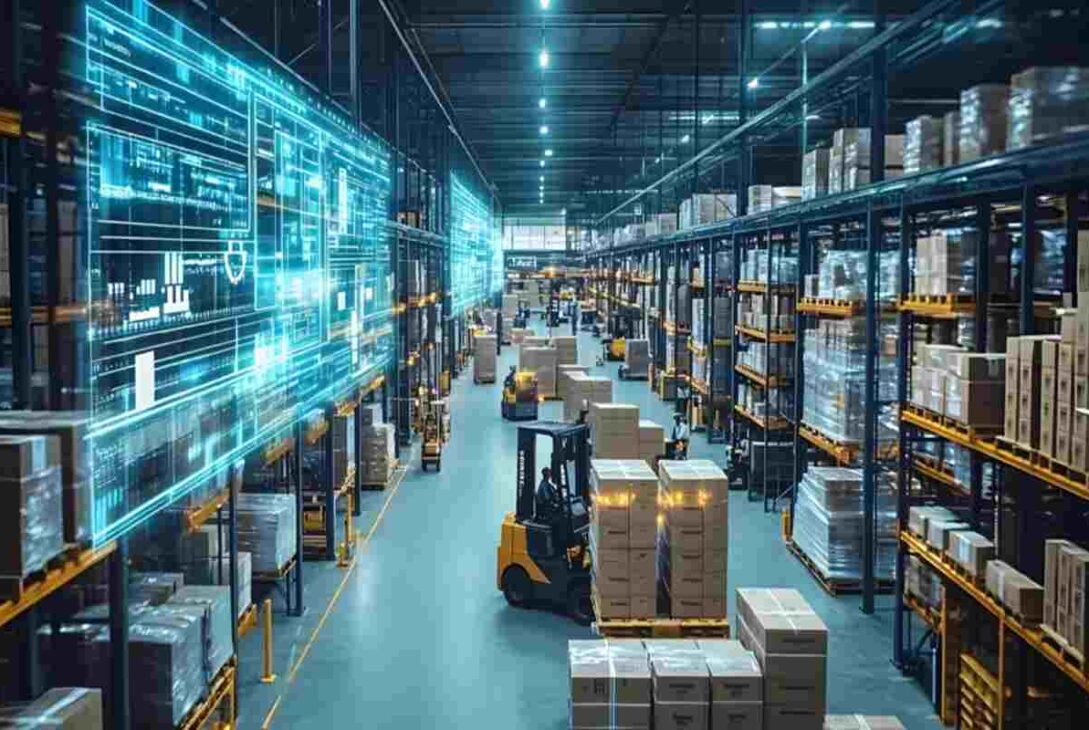The modern warehouse has evolved far beyond simple storage spaces into sophisticated hubs of technological innovation. Today’s distribution centers face unprecedented pressure to maximize efficiency while minimizing costs, driving the adoption of cutting-edge technologies that fundamentally transform how goods are stored, tracked, and moved.
From revolutionary building techniques to artificial intelligence (AI)-powered systems, these innovations are reshaping the landscape of on-site warehousing operations and setting new standards for productivity and precision.
1. Pre-Engineered Buildings:
Pre-engineered buildings represent a paradigm shift in warehouse construction, offering unprecedented speed and cost-effectiveness in facility development. These structures utilize standardized components manufactured off-site under controlled conditions, dramatically reducing construction timelines from months to weeks. The precision engineering ensures optimal structural integrity while accommodating the specific needs of modern warehousing operations, including heavy machinery loads and extensive racking systems.
The modular nature of pre-engineered buildings allows for rapid expansion and modification as business needs evolve. Unlike traditional construction methods that require extensive on-site work and weather-dependent schedules, these buildings can be erected in virtually any climate condition with minimal disruption to surrounding operations. The standardized components also translate to significant cost savings.
When selecting warehouse solutions, working with reputable manufacturers ensures quality and reliability across diverse applications. Whether for standard distribution centers or specialized facilities like those designed for extreme environments, established pre-engineered building suppliers provide the expertise and proven track record necessary for successful project completion.
2. Automated Storage and Retrieval Systems:
Automated Storage and Retrieval Systems (ASRS) have revolutionized how warehouses approach inventory management by eliminating the need for human workers to navigate towering storage areas. They utilize computer-controlled mechanisms to automatically place and retrieve items from designated storage locations, dramatically increasing both speed and accuracy while maximizing vertical space utilization.
The integration of ASRS technology allows warehouses to achieve storage densities previously impossible with traditional methods. By eliminating the need for wide aisles to accommodate forklifts and human workers, these systems can increase storage capacity within the same footprint. The precision of automated systems also reduces product damage and improves inventory accuracy.
3. Internet of Things (IoT) Sensors:
The proliferation of IoT sensors throughout warehouse facilities has created an unprecedented level of visibility into every aspect of operations. These intelligent devices continuously monitor environmental conditions, equipment performance, and inventory levels, providing managers with real-time data that enables proactive decision-making and immediate response to potential issues.
Temperature and humidity sensors ensure optimal storage conditions for sensitive products, while vibration monitors on conveyor systems can predict equipment failures before they occur. Moreover, smart sensors integrated into racking systems provide continuous weight monitoring, preventing overloading and potential structural issues.
This comprehensive sensor network creates a digital twin of the physical warehouse, allowing for sophisticated analytics and optimization strategies that were previously impossible to implement.
4. Artificial Intelligence (AI) and Machine Learning (ML):
The integration of AI and ML algorithms has transformed warehouse operations from reactive to predictive. These systems analyze vast amounts of historical data to identify patterns and trends, enabling warehouses to anticipate demand fluctuations, optimize staffing levels, and streamline inventory positioning for maximum efficiency.
ML algorithms continuously refine picking routes and storage locations based on product velocity and seasonal trends. This dynamic optimization ensures that fast-moving items are positioned for quick access while slower-moving inventory is stored in less accessible areas. The result is a significant reduction in travel time and labor costs.
5. Robotic Process Automation:
Robotic process automation has emerged as a game-changer for repetitive warehouse tasks, offering unmatched precision and consistency in operations that were previously labor-intensive. From automated picking systems that can handle delicate items to robotic palletizers that create perfectly stable loads, these technologies are transforming the speed and accuracy of warehouse operations.
Collaborative robots, or cobots, work alongside human workers to enhance productivity without completely replacing human expertise. These systems excel at handling standardized tasks while allowing human workers to focus on more complex decision-making and problem-solving activities. The integration of robotic systems also improves workplace safety by removing workers from potentially hazardous tasks involving heavy lifting or dangerous equipment.
Final Thoughts
The convergence of these technological innovations is creating warehousing environments that are more efficient, accurate, and adaptable than ever before. As these technologies continue to evolve and integrate, expect even greater improvements in operational efficiency and cost reduction. The warehouses that embrace these innovations today are positioning themselves not just for current success, but for continued leadership in an increasingly competitive marketplace where efficiency and precision are paramount to survival and growth.



